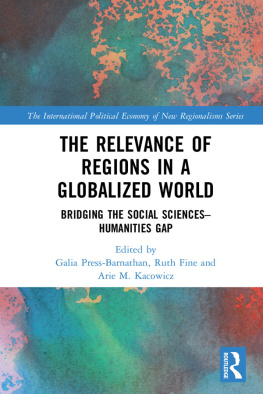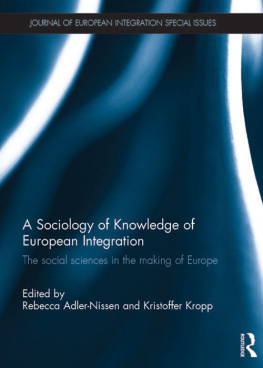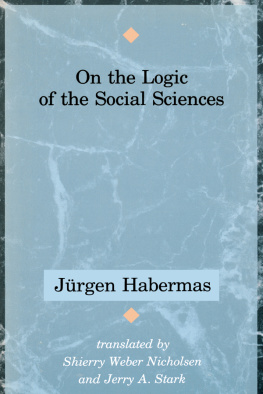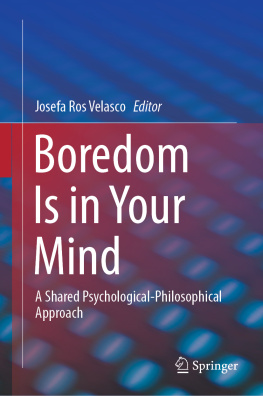1
Introduction
Jens Harbecke and Carsten Herrmann-Pillath
Economic science increasingly incorporates insights from psychology and the neurosciences. These developments have already resulted in new approaches to the design of economic policies, inspired by the popular term of nudging consumers towards more rational behaviour (Thaler and Sunstein 2009). However, integrative theoretical approaches have also with considerable criticism.
Apart from ethical and practical considerations concerning nudging approaches to policy making, which have sometimes challenged a facts-oriented debate in Germany and other European countries (Bornemann and Smeddinck 2016; McFadden 2006; Schnellenbach 2012), the cross-disciplinary integration of results from economics, behavioural economics, and neuroeconomics into more unified theories and models has been charged with lacking a systematic and coherent methodological framework. Indeed, until today it is difficult to find accepted scientific standards and/or a shared heuristics for integrating results from the cognitive sciences and generally accepted models from economics, game theory, and decision theory. When do we consider the integration of such results and models successful? How do we deal with a lack of fit? In what sense are fragmented experimental results from the cognitive sciences relevant for economics, if the former were attained without integrating environmental and institutional factors into the experimental design? How do we expand further successfully integrated models in the sense of an overarching theory? And, going beyond the world of science, which models and theories should inform us when designing policy? Given the importance of these questions for the progress of science as well as policy making, the literature contains surprisingly few attempts to answer them in detail.
Perhaps as a reaction to this methodological obscurity, economists have sometimes doubted whether truly original insights can be reached from integrating research in economics and the cognitive sciences that goes beyond what can be achieved by studying market mechanisms that determine and constrain the behaviour of actors (Gul and Pesendorfer 2008; Harrison 2008; Rubinstein 2008; Bernheim 2009). Others, on the other hand, have emphasized the need for advancement in studying theory integration of economics and other scientific fields (e.g. Fehr and Rangel 2011).
The INSOSCI project, which ran from 2016 until 2019, aimed at answering at least some of these questions by clarifying the methodological and philosophical foundations of the integration of economics and the neurosciences. It sought to achieve this goal by constructing a conceptual framework, which allows identifying interactive and mechanistic structures between neuronal, psychological, behavioural, and institutional phenomena. The project members expected such a kind of theoretical integration to have significant consequences for policy design (Camerer et al. 2005; Camerer 2013; Ross 2012).
Towards its final phase, the INSOSCI project held a symposium at Witten/Herdecke University in February 2019, which was attended by leading researchers working either in philosophy or in scientific projects at the intersection of economics, game theory, decision theory, and the neurosciences. During the meeting, the participants discussed potential titles for the methodological vision for theoretical integration that had already emerged from their interactions during the project, and especially during the symposium. Eventually, the notion of Social Neuroeconomics was chosen as a term that captures best the normative-methodological approach required for an adequate and successful integration of economics and the cognitive sciences.
The term has already been used occasionally in the literature, whilst a generally accepted meaning has not been settled. It is found in the specific context of neuroeconomic research on social preferences (Fehr and Camerer 2007). This research has produced the insight that social preferences may be rooted in mechanisms of choice that correspond to individual preferences in activating the same dopaminergic reward circuits. That means, acting with a social orientation produces rewards in the same way as, say, experiencing satisfaction from consuming positively valued goods. Hence, the motivation for using the term Social Neuroeconomics is that the analysis of social behaviour builds on the basic neuroeconomic model of choice.
It is remarkable that this view seems to reinstate Adam Smiths notion of fellow feeling. In his Theory of Moral Sentiments, Smith distinguishes between sympathy and fellow feeling. Sympathy is very similar to the modern term empathy, especially in the cognitive meaning, and may be conceived as a capacity to generate social preferences: Sympathy enables us to take the position of others and thereby develop moral judgments that take into account their interests. Sympathy does not mean that we really feel like others: We can imagine the pain of others, but we do not feel that pain. However, we have fellow-feelings: That means, we enjoy the plain fact that we can sympathize with others. That means, if we sympathize with their pain, that goes along with a positive feeling. That seems very similar to the modern neuroeconomic analysis of rewards gained from socially oriented behaviour.
From the viewpoint of the members of the INSOSCI project and the participants of the symposium, this notion of Social Neuroeconomics is too narrow. The main reason for this assessment is expressed in the well-known criticism of neuroeconomics as focusing too narrowly on mechanisms of choice, thus following a similarly narrow definition of economics as a science of choice. Such an approach is dubbed the neuroclassical analysis in Camerers (2013) review of Glimchers Foundation of Neuroeconomic Analysis.
In the alternative view, neuroscience not only offers proofs of concept but crucially contributes to a rethinking of standard conceptions of economics. This has already happened in parts of behavioural economics and economic psychology. However, the field is complex and messy: Neuroeconomists often do not support the views of behavioural economists, as far as the standard model of choice is concerned. For instance, they often refute the dual systems approach that many behavioural economists maintain in opposition to the standard economic model (Kable and Glimcher 2007). At the same time, however, neuroscience, as including subdisciplines such as social neuroscience, may offer a third alternative transcending these methodological battles (Herrmann-Pillath 2019). This is indicated by the fact that today, often the term decision neuroscience has substituted for neuroeconomics (Bossaerts and Murawski 2015).
The concept of Social Neuroeconomics that emerged from the INSOSCI project differs fundamentally from the aforementioned narrow Smithian sense, although it can include the latter. At the same time, it transcends the specific dispute between neuroeconomists and behavioural economists. Social Neuroeconomics is rather intended to dub a general normative-methodological approach, which, on the one hand, considers the neurosciences as a device to confirm but also correct and reconceptualize economic models and the phenomena they describe; but which, on the other hand, emphasizes the social and economic context as indispensable for the identification, localization, and adequate understanding of specific brain mechanisms. The specific role of the latter typically remains opaque if not related to a social or economic environment. We suggest that the theoretical framework of such integration is that of a mechanistic explanation (Machamer et al. 2000; Craver and Darden 2001; Craver 2001, 2007; Bechtel and Richardson 1993; Glennan 1996) in the sense that, in a successful and adequate integrated explanation, neural phenomena are typically characterized as constituents (Craver 2007; Harbecke 2010, 2014) of economic phenomena in a specific context, together with other constituents. Such a two-way oriented integration is predicted to achieve better and more adequate theories of social and economic phenomena. In this sense, what Social Neuroeconomics characterizes in the view of the INSOSCI team members and the participants of the symposium is a general methodological approach that has multiple directions of explanation and that involves a hypothesis about the adequacy and success of certain kinds of theories.






